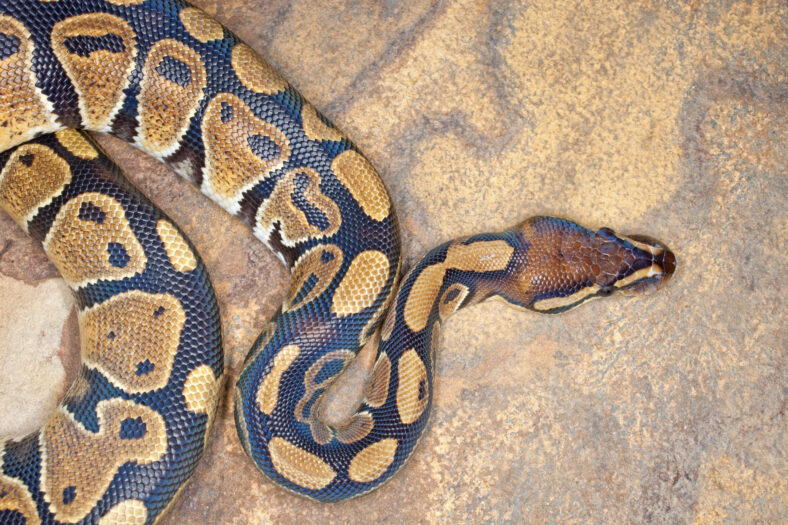Birds Drape Snake Skin Over Their Nests To Keep Predators Away From Their Babies

One defense strategy that birds might employ involves draping their nests with snake skin. This tactic helps keep predators away, preventing them from eating eggs.
Researchers analyzed new and historical data to show that birds nesting in cavities, which are covered nests with small openings, are more likely to use shed snake skin than birds that build open nests.
“What do snakes eat? They eat a lot of mice and small mammals,” said Vanya Rohwer, the lead author of the study and a senior research associate at Cornell University.
“We think that an evolutionary history of harmful interactions between small-bodied predators of birds that are often eaten by snakes should make these predators afraid of snake skin inside of a nest. It might change their decision-making process of whether or not they’re going to go into a nest.”
For centuries, birdwatchers have documented the use of snake skins in nests. They speculated that it occurs more in cavity nests, but no one had ever tested the theory until now.
The research team collected data on which bird species use snake skin and their nest type. They found that the behavior was only associated with passerines, or perching birds. Among passerines, birds that constructed cavity nests were more likely to use snake skins.
The researchers then reviewed data from historical records dating back to the late 1800s through the 1950s. The records described observations of nest construction, bird species, and locations across the United States.
“The proportion of nests that had snake skin in the nest description was about 6.5 times higher in cavity nests compared to open cup nesters,” said Rohwer.
“So that was really, really neat, and that suggested to us that we have these two totally independent lines of data that are telling a very similar story.”

Sign up for Chip Chick’s newsletter and get stories like this delivered to your inbox.
The researchers investigated the benefits that snake skin may provide for the cavity-nesting birds. Their results supported the idea that snake skin reduced nest predation.
To test that idea, the team placed two quail eggs inside more than 60 nest boxes and 80 inactive American robin nests around the Monkey Run Natural Area in Ithaca to simulate cavity and open-cup nests. Some of the nests contained snake skins that were collected from a local snake breeder.
Every three days over the course of two weeks, the researchers climbed up to the nests and checked on the eggs.
Trail cameras revealed that small mammals and avian nest predators frequented open-cup nests, while only small mammals visited the nest boxes.
Eggs in nest boxes with snake skin had a much higher chance of survival throughout the two-week period. The experiment demonstrated that snake skin had the most benefits in cavity nests.
The study was published in American Naturalist.
More About:Animals